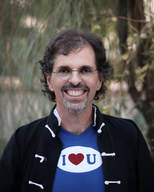 The other day, I read an interview with a progressive minister who was describing the fastest-growing segment of our society, which is the 20% of Americans who consider themselves spiritual but who choose not to affiliate with any specific religion. He referred to this group as the "Nones" because they have no religious affliliation. As someone who identifies with this segment of the population, I am not particularly fond of the label. It focuses on what we are not rather than on what we are. It would be like referring to Christians as "non-Buddhists" or "non-Hindus." Although I may not be affiliated with any one religion, I embrace the wisdom, prayers, mantras, and sacred music from all of them, which is why I was involved in the creation of Global Chant. From its inception, Global Chant has been, among other things, a community for those whose spirituality does not conform to the conventions of traditional churches, synagogues, temples, and other religious institutions. When considering a way to describe this form of spirituality that exists "outside the box," I came across the word, omnify, which means "to render universal." For 17-plus years, I have met tens of thousands of beautiful, spiritual people through my involvement with Global Chant. From what I have seen, the vast majority of these individuals have been "rendered universal" by the unique spiritual paths they have chosen--or that have chosen them. I am proud to say that I belong spiritual community that is most definitely omnified! Our spirituality extends beyond the scope of any one religion because we are universal in our orientation. In some ways, we may be "none," but in other ways, we are most definitely "all." Maybe the best thing to call us--if you have to call us something--is the omnis. What do you think? Would you describe yourself as "omnified"?
6 Comments
 OK. So the story you're about to read isn't quite the virgin birth. It's still very impressive: We have two goat mascots at PlayHaven: Pan and Ginny. Our plans have been to milk Ginny one day, but in order to do so, we knew we would have to bring in a buck to impregnate her, given that Pan no long has the proper equipment. What we've read about goats is that they first must have a kid in order to produce milk. In the past few weeks, we have noticed that Ginny's udders have been growing. A friend who grew up on a ranch told us that he thought she was producing milk. I asked him to try milking her, just to see, and sure enough, a powerful stream of milk came out of her! It turns out that she is a "precocious milker"--one of those rare female goats who has udder development without kidding. No kidding! We are now starting to milk her on a daily basis. It's an adjustment for all concerned. After all, I grew up in Seattle--not exactly a goat-milking mecca. And Ginny is still getting used to the daily handling of her delicate parts. Needless to say, though, we're very excited about this development and look forward to the day when we can share some homemade goat cheese with the PlayHaven community.  Knowing that this is a time of year when many of us are trying to trim down (myself included), I've been holed up in my laboratory working on the ultimate weight-loss tool. The good news is that I found it. What's great about this tool is that it's simple, cheap, and extremely effective. Best of all, many of you may already have it--or at least a close facsimile. This tool is an old-fashioned dinner bell. Here's how it works: Five times a day, when you're hungry, you ring it to declare the start of mealtime. At that point, you sit down to a 300-calorie meal. It's important that you actually sit down and have a meal so that you can be mindful of what you're eating. You can choose any foods you want that add up to 300 calories or less, although I have found in my extensive research that balanced meals are more filling. Here are some examples: 1) a bowl of multigrain flakes with skim milk and a banana; 2) a turkey sandwich with light mayo, lettuce, and tomato on multigrain bread; 3) a piece of broiled salmon with new potatoes, a steamed vegetable, and a green salad with balsamic vinegar. If you're still hungry after your meal, keep in mind that you can ring the bell again in another two hours if you'd like. Also, it's important to note that hunger and thirst can feel the same at times. So, make sure to drink plenty of water between meals (but not with meals). Finally, there is a delay reaction between the time you finish a meal and when your brain gets the signal that you're full. So, give yourself at least 15-20 minutes to let the feeling of fullness take effect. Does the bell technique work? I have already lost 5 pounds in the two weeks that I've been ringing my bell. Based on my research, I would say that this method should work for at least 80-90% of you, as long as you stay true to it. One more note: Don't ring your bell any later than 8pm. Your body's metabolism slows down at night. If I get hunger pains in the middle of the night, I take a tiny sip of either dairy or non-dairy milk but nothing more. That seems to do it for me. And I do ring the bell first thing every morning because I wake up with a healthy appetite. Try it and let me know how it works. I think you'll find, as I have, that it's simple and fun to do. I enjoy my food much more now, because I'm eating more mindfully. And I love ringing that ol' dinner bell to declare (at least to myself): "Come and get it!" |
I want to hear from you! Please share your questions and comments. And sign up for my newsletter, where I will pass along the insights, ideas, and inspiration that come my way.
Contact me:Archives
November 2023
|

 RSS Feed
RSS Feed
